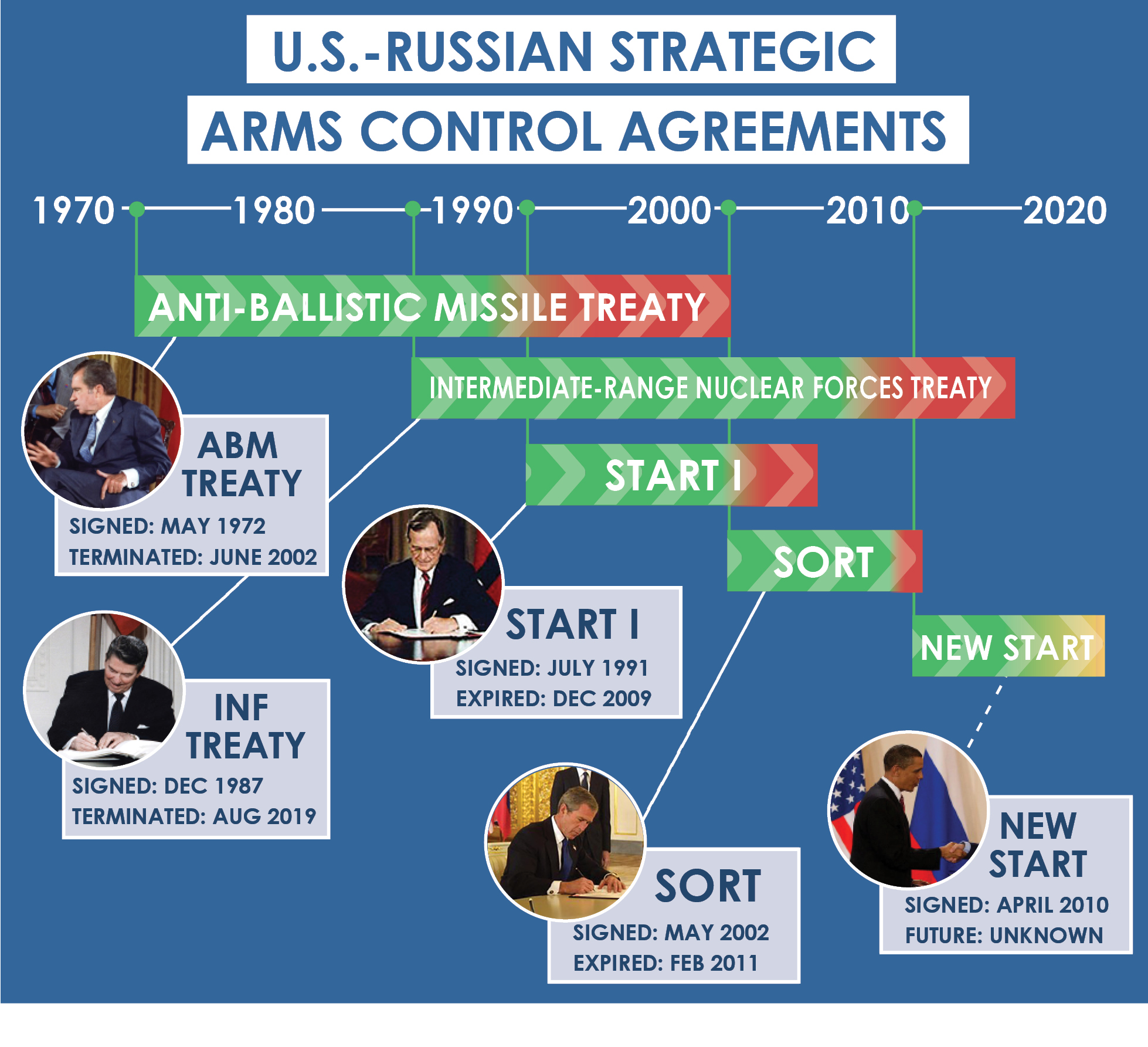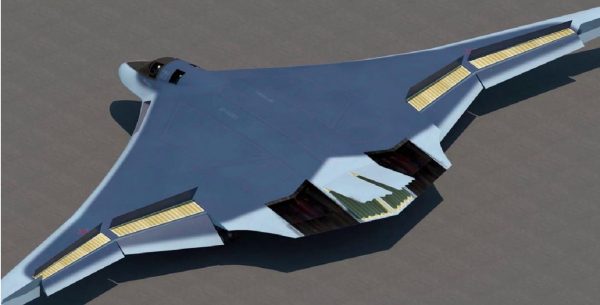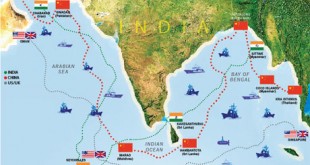The ongoing conflict between Russia and Ukraine has amplified the nuclear risk, reshaping global security dynamics and intensifying a nuclear modernization race among major powers. As tensions escalate, the modernization of the nuclear triad—the three-pronged structure of land, sea, and air-based nuclear delivery systems—has become a focal point for countries seeking to reinforce their deterrent capabilities. This article explores how the current geopolitical landscape is fueling nuclear risks and the strategic modernization pursuits of nuclear powers.
The Russia-Ukraine Conflict and Escalating Nuclear Tensions
The Russia-Ukraine war represents the most significant confrontation between nuclear-capable states since the Cold War. With the Kremlin’s repeated allusions to its nuclear arsenal as a warning to the West, there is growing concern that nuclear weapons could be used either tactically or strategically, undermining global nuclear stability.
In September 2022, Russian President Vladimir Putin ordered Russia’s first mobilization since World War II, coupled with a plan to annex significant portions of Ukraine, signaling a stark escalation in the ongoing conflict. Putin warned that he would not hesitate to use nuclear weapons to defend Russia, particularly in response to threats to the nation’s territorial integrity or existence. He alleged that top officials from several unnamed NATO countries had hinted at the potential use of nuclear arms against Russia, further accusing the West of risking a “nuclear catastrophe” by allowing Ukraine to target the Zaporizhzhia nuclear power plant, a claim Kyiv has consistently denied.
This move toward annexing Ukrainian territories could potentially provide Russia with a justification to deploy its nuclear arsenal, the world’s largest. Russia’s nuclear doctrine permits the use of nuclear weapons if faced with weapons of mass destruction or an existential threat. In a televised address, Putin declared, “If the territorial integrity of our country is threatened, we will without doubt use all available means to protect Russia and our people—this is not a bluff.”
The Nuclear Triad: A Backbone of Deterrence
The nuclear triad represents a foundational element of deterrence for nuclear-armed states, providing a robust, multi-layered system that safeguards against potential aggression. This triad comprises three key components, each designed to ensure a reliable and flexible response in the event of a nuclear conflict.
Land-based Intercontinental Ballistic Missiles (ICBMs) for rapid, long-range nuclear response,
Land-based Intercontinental Ballistic Missiles (ICBMs) are a critical part of this system, offering rapid, long-range nuclear response capabilities. Positioned in fortified silos or mobile launchers, ICBMs enable nations to respond swiftly to an imminent threat, enhancing their deterrent posture with a show of force that is both visible and enduring.
Submarine-Launched Ballistic Missiles (SLBMs) for stealthy and secure second-strike capabilities
Complementing the ICBM leg are Submarine-Launched Ballistic Missiles (SLBMs), which serve as the stealthiest and most secure element of the triad. Deployed from submarines, SLBMs provide a nearly undetectable means of retaliation, even if other nuclear assets are compromised. This second-strike capability is vital for maintaining a balanced and credible deterrence strategy, as it ensures that adversaries cannot easily neutralize a nation’s nuclear forces. The mobility and concealment offered by submarines make SLBMs a powerful deterrent against any preemptive nuclear attack.
Strategic Bombers capable of deploying nuclear weapons through flexible, air-based delivery.
The third leg of the triad, strategic bombers, offers unparalleled flexibility through air-based nuclear weapon delivery. Unlike ICBMs and SLBMs, which are launched immediately when a decision is made, bombers can be deployed on alert, allowing leaders more time to decide on a nuclear strike if tensions escalate. Strategic bombers can carry a variety of nuclear payloads and adjust their flight paths in real time, making them a highly versatile component of the nuclear triad. This flexibility enables them to serve not only as a direct means of retaliation but also as a visible symbol of deterrence, able to patrol areas of interest and serve as a reminder of a nation’s capabilities.
Together, these three legs of the nuclear triad—land-based ICBMs, SLBMs, and strategic bombers—create a resilient and redundant system that can deter adversaries by guaranteeing a devastating response, even if one or more components are neutralized. In today’s evolving nuclear landscape, characterized by advancements in missile defense and precision strike capabilities, nuclear-armed states are investing in modernizing all three legs of their triad. This commitment to updating and maintaining the triad underscores its enduring importance as the backbone of credible nuclear deterrence, ensuring stability in an increasingly uncertain world. As the global nuclear environment becomes more volatile, nuclear powers are investing heavily in modernizing all three legs of their triad to maintain credible deterrence.
Nuclear Modernization Race
Globally, the nuclear landscape is marked by rapid advancements, particularly among Russia, the U.S., and China, who are each modernizing their nuclear triads.
In February 2023, Russia’s withdrawal from the New Strategic Arms Reduction Treaty (New START)—the last standing arms control agreement with the United States—marked a pivotal shift in nuclear diplomacy. This has created a nuclear “gray zone” where transparency and predictability are in short supply, leading both the United States and Russia to undertake sweeping modernization efforts in response to the changing threat landscape.
Russia’s Nuclear Modernization
Russia’s nuclear modernization program is extensive and comprehensive, reflecting the nation’s strategic focus on maintaining a formidable nuclear arsenal. Currently, approximately 90% of Russia’s nuclear weapons are undergoing upgrades, highlighting the significant investment in both existing and new technologies. This modernization effort is anchored in the belief that a strong nuclear deterrent is vital for national security, especially in the context of increasing tensions with NATO and other adversaries.
Over the past decade, Russia’s nuclear strategy has remained largely consistent, with a significant policy update approved by President Putin in December 2014. This policy asserts Russia’s right to use nuclear weapons in response to nuclear attacks or threats to its existence from conventional weapons. Such a stance reflects Russia’s focus on maintaining a robust nuclear deterrent amid perceived threats from NATO and the West.
From 2013 to 2015, Russia allocated approximately 101 billion rubles to its nuclear modernization program, driven by the development of global missile-defense systems by the U.S. and ongoing tensions with NATO over conflicts in Crimea, Ukraine, and the Baltic states. Currently, Russia’s strategic forces are amidst a modernization cycle, aiming to enhance its aging arsenal despite remaining less capable than that of the United States. The Kremlin is focused on modernizing each leg of its nuclear triad—land-based ICBMs, submarine-launched ballistic missiles (SLBMs), and strategic bombers—to ensure a credible deterrent.
Russia’s nuclear modernization is also extensive, with ongoing upgrades to 90% of its arsenal, including improvements to the Topol ICBM and the deployment of the RS-28 Sarmat, known as “Satan 2,” an ICBM capable of delivering multiple warheads across continents.
ICBMs:
A key component of this modernization effort is the replacement of all Soviet-era ICBMs (such as the SS-18, SS-19, and SS-25) with more advanced systems. The Strategic Missile Force currently operates eight missile types, including the Yars and Avangard. By 2024, all missile formations are expected to be rearmed with these advanced systems. The Yars, in particular, is a significant development, offering both silo-based and mobile capabilities with multiple independently targetable reentry vehicles (MIRVs).
Among these new developments is the RS-28 Sarmat, commonly referred to as “Satan II.” This state-of-the-art ICBM is designed to deliver multiple warheads across vast distances, showcasing enhanced range, payload capacity, and maneuverability that enable it to evade modern missile defense systems. The Sarmat represents a significant leap in Russia’s ICBM capabilities, reinforcing its strategic deterrent posture.
SLBMs:
In the realm of sea-based deterrence, Russia’s naval strategy is transitioning from older Delta-class submarines to the new Borei-class. With plans to build a total of eight Borei submarines, these vessels will enhance Russia’s underwater capabilities and support a more modern nuclear arsenal. The Borei-class submarines are expected to carry advanced SLBMs, thereby improving Russia’s second-strike capability.
Furthermore, Russia is reportedly developing a nuclear super-torpedo known as the Status-6. This weapon is designed to create extensive radioactive contamination in enemy coastal areas, significantly impacting economic installations and posing a unique threat to adversaries. The Status-6 can reportedly travel long distances and operate at considerable depths, enhancing its potential as a strategic weapon.
In addition to ICBMs, Russia is also expanding its submarine-launched ballistic missile (SLBM) capabilities. The Russian Navy continues to enhance its fleet of ballistic missile submarines, particularly through the deployment of the Borei-class submarines equipped with the Bulava SLBM. These submarines play a crucial role in bolstering Russia’s second-strike capabilities, ensuring that even in the face of conventional military challenges, the country can maintain a credible nuclear deterrent from the sea. The stealth and endurance of these submarines allow them to operate undetected, contributing to the overall strategic stability of Russia’s nuclear forces.
Strategic Bombers:
Furthermore, Russia is actively modernizing its fleet of strategic bombers, which includes the Tu-160M “White Swan” and the Tu-95 “Bear.” These bombers are being equipped with advanced hypersonic missiles and long-range cruise missiles, which significantly enhance their strike capabilities and survivability. This modernization not only extends the operational range of Russia’s air-based nuclear forces but also improves their ability to penetrate sophisticated air defenses, making them a critical component of the nuclear triad.
Additionally, the PAK-DA strategic bomber is set to enter service around 2023, aimed at replacing the aging fleet of long-range bombers, including the Tu-22M3, Tu-95, and Tu-160. Featuring a stealthy flying-wing design, the PAK-DA is expected to carry advanced nuclear-capable cruise missiles over substantial distances, reinforcing Russia’s air-based deterrent capabilities.
Overall, Russia’s modernization push underscores its commitment to sustaining a robust and flexible nuclear posture. The enhancements across all three legs of its nuclear triad—land-based ICBMs, sea-based SLBMs, and air-delivered nuclear capabilities—reflect a strategic imperative in a security environment marked by heightened tensions with NATO and the West. As Russia continues to modernize its nuclear arsenal, it aims to project strength and maintain a credible deterrent, essential for its national defense strategy in an increasingly complex geopolitical landscape.
China: Expanding Its Nuclear Arsenal and Delivery Systems
Implications of a Renewed Nuclear Arms Race
The Path Forward: Strengthening Global Nuclear Restraint
The Russia-Ukraine war and the global push to modernize nuclear arsenals have heightened the risk of a nuclear arms race. As Russia, the United States, and China reinforce their triads, the world faces a precarious future where nuclear escalation looms as a potential consequence of geopolitical tensions. The need for renewed dialogue, strategic restraint, and modern arms control agreements is more pressing than ever if we are to avert a new era of nuclear instability. In the face of these dangers, collective commitment to diplomacy and non-proliferation can guide us toward a safer and more secure global order.



launched+test+fired+fully+operational+next+year+with+their+JL-2+submarine-launched+ballistic+missiles+(SLBMs)096097095092a+(2).jpg)
 International Defense Security & Technology Your trusted Source for News, Research and Analysis
International Defense Security & Technology Your trusted Source for News, Research and Analysis

